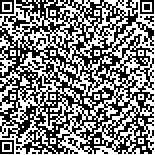本文已被:浏览 807次 下载 3214次
投稿时间:2010-09-13 修订日期:2010-11-18
投稿时间:2010-09-13 修订日期:2010-11-18
中文摘要: 新一代国内气象通信系统是继9210工程以后国内气象通信系统的重要升级,针对数据传输时效要求高、资料信息量庞大、传输环节多且不规范、监控不全面的现状,采用赛门铁克VCS(VERITAS Cluster Server)技术,建立省级和国家级两级的数据传输、通信数据处理和系统监视的统一管理平台,实现气象通信系统的高可用性、易扩展性,业务流程的规范化、提升数据的处理能力与传输能力。在业务运行测试中, 该系统将所有观测资料在规定时效内传输到国家局,且在部分节点发生异常时仍能正常运行。运行结果证明:该系统运行稳定,监控内容全面,达到设计目的。文章详细介绍新一代国内气象通信系统的建设背景与目的、系统整体架构、实现细节和其他关键技术。
中文关键词: 气象资料, 数据交换, 系统监视
Abstract:A new generation of national meteorological communication system is established in China Meteorological Administration. For the high demand of data transmission time, the huge amount of information data, complex and irregular transmission, incomprehensive monitoring and other problems, the provincial and national level unified management platform is established with the data transmission and processing and system monitoring function based on the Symantec VCS (VERITAS Cluster Server) technology. The meteorological communication system to achieve high availability, easy scalability, and the standardization of business processes, improves data processing capacity and transmition capacity. In the business operational test, all observation data can be transmitted to the National Meteorological Information Center within the prescribed time, and the system can still function properly when an exception occurs on any node. The test results show that: the system is stable, monitoring is comprehensive, so as to meet the design objective. This paper describes the construction of the system, the background and purpose, overall system architecture, implementation details, and other key technologies.
文章编号: 中图分类号: 文献标志码:
基金项目:中国气象局“全国气象宽带网建设项目”资助
| 作者 | 单位 |
| 林润生 | 1 国家气象信息中心, 北京 100081 |
| 孙周军 | 2 广东省气象信息中心, 广州 510080 |
| 谭小华 | 1 国家气象信息中心, 北京 100081 |
| 肖文名 | 2 广东省气象信息中心, 广州 510080 |
引用文本:
林润生,孙周军,谭小华,肖文名,2011.新一代国内气象通信系统设计与实现[J].气象,37(3):356-362.
LIN Runsheng,SUN Zhoujun,TAN Xiaohua,XIAO Wenming,2011.The Design and Implementation of the Domestic Next Generation Meteorological Telecommunication System[J].Meteor Mon,37(3):356-362.
林润生,孙周军,谭小华,肖文名,2011.新一代国内气象通信系统设计与实现[J].气象,37(3):356-362.
LIN Runsheng,SUN Zhoujun,TAN Xiaohua,XIAO Wenming,2011.The Design and Implementation of the Domestic Next Generation Meteorological Telecommunication System[J].Meteor Mon,37(3):356-362.

